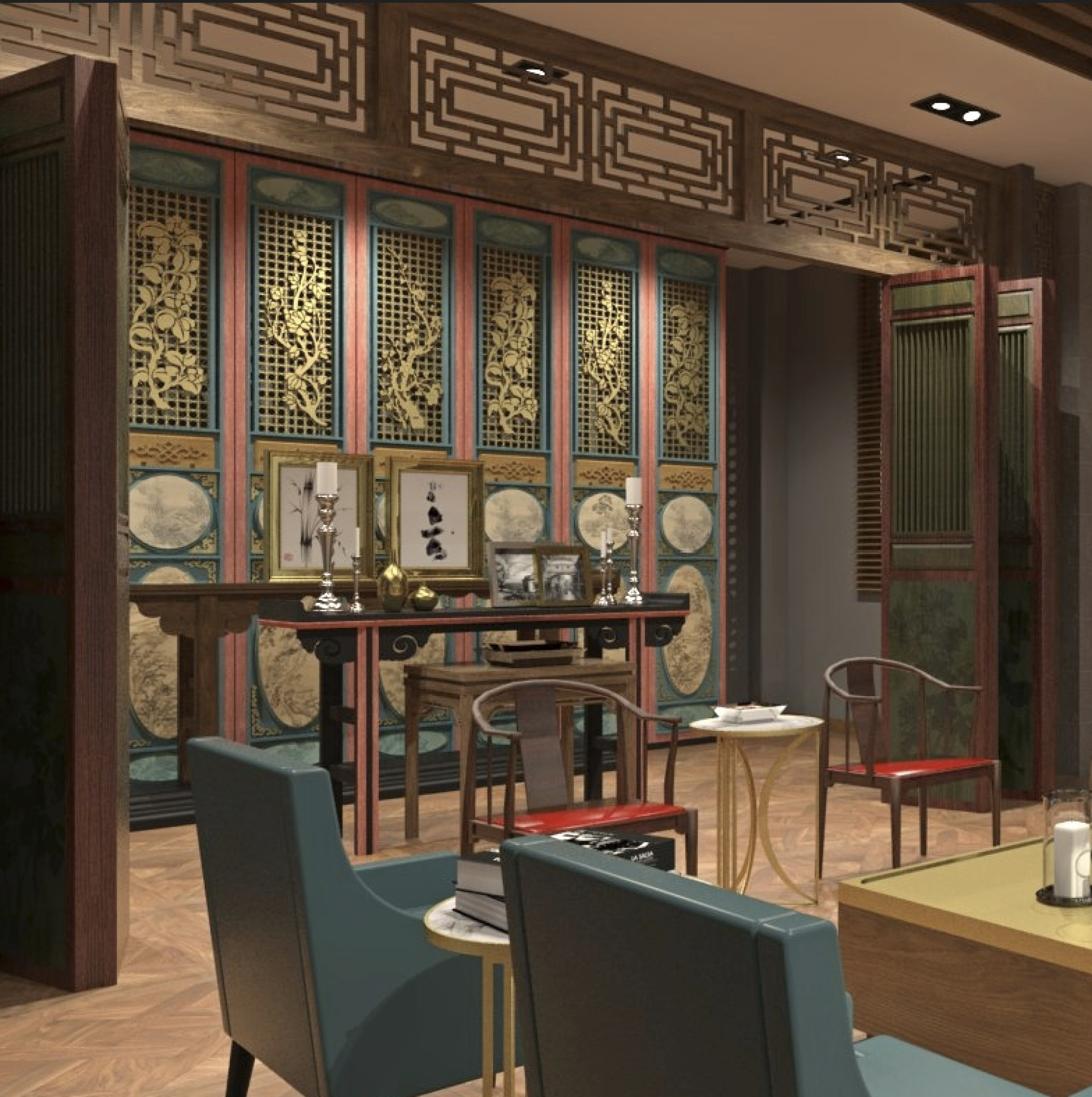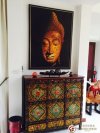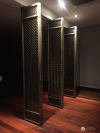The Role of Feng Shui in Choosing and Placing Chinese Antique Furniture

Feng Shui, the ancient Chinese practice of harmonizing the energy, or Qi (气), within a space, has been guiding people for centuries in creating balanced and auspicious environments. It emphasizes the importance of spatial arrangement and the placement of objects to enhance the flow of positive energy, thereby promoting health, wealth, and well-being. When it comes to choosing and placing Chinese antique furniture, understanding and applying Feng Shui principles can transform your living space into one that radiates harmony, beauty, and prosperity. This blog explores how to incorporate Feng Shui into selecting and arranging Chinese antique furniture to create a balanced and harmonious home
1.The Basics of Feng Shui: Understanding the Flow of Energy
Feng Shui is rooted in the idea that our surroundings greatly influence our energy and well-being. It focuses on the flow of Qi, or life force energy, through a space, and aims to create a balanced environment where this energy can move freely and beneficially. Key concepts include the Bagua (八卦), a map used to analyze the energy of a space, and the Five Elements (五行) Wood, Fire, Earth, Metal, and Water which must be balanced to achieve harmony.
When applied to home decor and furniture placement, Feng Shui principles guide us to choose pieces that not only fit aesthetically but also enhance the energetic balance of the space. Chinese antique furniture, with its rich symbolism and historical significance, can play a pivotal role in this process.
2. Choosing Chinese Antique Furniture with Feng Shui in Mind
Selecting Chinese antique furniture with Feng Shui principles involves more than just picking beautiful pieces. It requires an understanding of how different materials, shapes, and symbols can affect the energy of your space.
a. Materials and the Five Elements: Each type of material corresponds to one of the Five Elements, and choosing the right element for each area of your home can help balance the energy.
Wood: Wooden furniture, such as cabinets or chairs, represents the Wood element. It is associated with growth, vitality, and flexibility. Wooden pieces are ideal for the East and Southeast areas of your home, which govern health and prosperity.
Metal: Metal furniture, like bronze or iron tables, embodies the Metal element. It symbolizes clarity, precision, and efficiency. Place metal pieces in the West or Northwest areas to enhance creativity and helpful people.
Earth: Stone or ceramic items represent the Earth element, symbolizing stability and grounding. These pieces are best placed in the center or Southwest areas, promoting relationships and overall stability.
b. Shapes and Feng Shui: The shape of the furniture can also influence the flow of energy in your space.
Rectangular: Rectangular shapes represent the Wood element, symbolizing growth and vitality. Rectangular tables and cabinets are ideal for promoting a sense of expansion and movement.
Round and Oval: Round shapes correspond to the Metal element, signifying completeness and unity. Round dining tables or mirrors can help foster harmony and communication.
Square: Square shapes are associated with the Earth element, representing stability and balance. Square tables or stools are suitable for grounding the energy in a room.
c. Symbolic Motifs: Chinese antique furniture often features symbolic carvings and designs that carry specific meanings in Feng Shui.
Dragons and Phoenixes: Symbols of power, protection, and harmony. Placing furniture with these motifs in the living room or entryway can invite auspicious energy and balance.
Lotus Flowers: Representing purity and spiritual growth, furniture adorned with lotus motifs is ideal for meditation spaces or bedrooms.
Peonies: A symbol of prosperity and love, perfect for enhancing the energy in bedrooms or living areas.
3. The Importance of Placement: Enhancing Energy Flow
Proper placement of furniture is crucial in Feng Shui, as it affects how energy flows through your home. Here are some guidelines for placing Chinese antique furniture to optimize Qi flow:
a. Command Position: The command position is a fundamental concept in Feng Shui, where you place furniture in such a way that you can see the entrance while being seated or lying down, without being directly in line with the door. This position provides a sense of security and control, allowing positive energy to flow towards you.
For example, place an antique bed or desk in the command position of the room to promote a sense of stability and empowerment.
b. Avoid Blocking Pathways: Ensure that furniture does not obstruct pathways, as blocked pathways can hinder the flow of Qi. Antique cabinets or screens should be placed against walls rather than in the middle of a room, allowing for easy movement and energy circulation.
c. Balance Yin and Yang: Feng Shui aims to balance the energies of Yin (passive, calm) and Yang (active, vibrant). Antique furniture can help achieve this balance. For instance, a dark, heavy wood cabinet (Yin) can be balanced with lighter, more open furniture, such as a glass-topped table (Yang).
d. Enhance the Bagua Areas: Each area of the home is associated with a different aspect of life, such as wealth, health, or relationships. Placing Chinese antique furniture in the appropriate Bagua areas can amplify the positive energy in those aspects.
- Wealth Area (Southeast): Place a beautiful antique sideboard or chest in the Southeast corner to enhance abundance and prosperity.
- Relationship Area (Southwest): A pair of antique chairs or a loveseat can strengthen relationships and partnerships.
- Career Area (North): A well-crafted wooden desk can support professional growth and opportunities.
4. Using Mirrors and Screens: Reflecting and Redirecting Energy
Chinese antique mirrors and screens are powerful Feng Shui tools that can be used to reflect or redirect energy within a space.
a. Mirrors: Mirrors are often referred to as the aspirin of Feng Shui because they can be used to solve a variety of issues. An antique Chinese mirror can be placed in a dining room to symbolically double the abundance of food and wealth. However, avoid placing mirrors directly facing the front door, as this can reflect and push away incoming positive energy.
b. Screens: Antique Chinese screens can be used to create privacy, redirect energy flow, and add visual interest to a space. Placing a screen in a hallway can slow down the flow of Qi, preventing it from rushing through the home and promoting a more balanced environment. Screens can also be used to hide clutter or unsightly views, ensuring that the energy in your space remains calm and positive.
5. Creating a Harmonious Environment: Integrating Feng Shui with Modern Living
Integrating Feng Shui principles with modern living doesnt mean your home has to look like an ancient Chinese palace. The goal is to create a space that feels balanced, harmonious, and supportive of your well-being. Here are some tips for blending Feng Shui with contemporary decor:
a. Balance Elements: Ensure that your space has a harmonious balance of the Five Elements. Use Chinese antique furniture as a focal point and complement it with modern pieces that represent other elements to create a cohesive look.
b. Clutter-Free Spaces: Clutter can obstruct the flow of Qi and create stagnant energy. Make sure that your Chinese antiques are showcased in clean, clutter-free environments to allow their beauty and energy to shine.
c. Personal Connection: Choose pieces that resonate with you personally. Feng Shui is about creating a space that feels good to you. If a particular antique piece speaks to you and enhances your sense of well-being, it is the right piece for your home.
Conclusion
Incorporating Feng Shui into the selection and placement of Chinese antique furniture can significantly enhance the energy and harmony of your home. By choosing pieces that align with the Five Elements, placing them in auspicious positions, and using symbolic motifs to reinforce positive intentions, you can create a space that not only looks beautiful but also supports your physical, emotional, and spiritual well-being. Whether you are an experienced Feng Shui practitioner or just beginning to explore this ancient art, integrating these principles into your home can help you harness the timeless wisdom of Feng Shui to create a harmonious and prosperous living environment.


